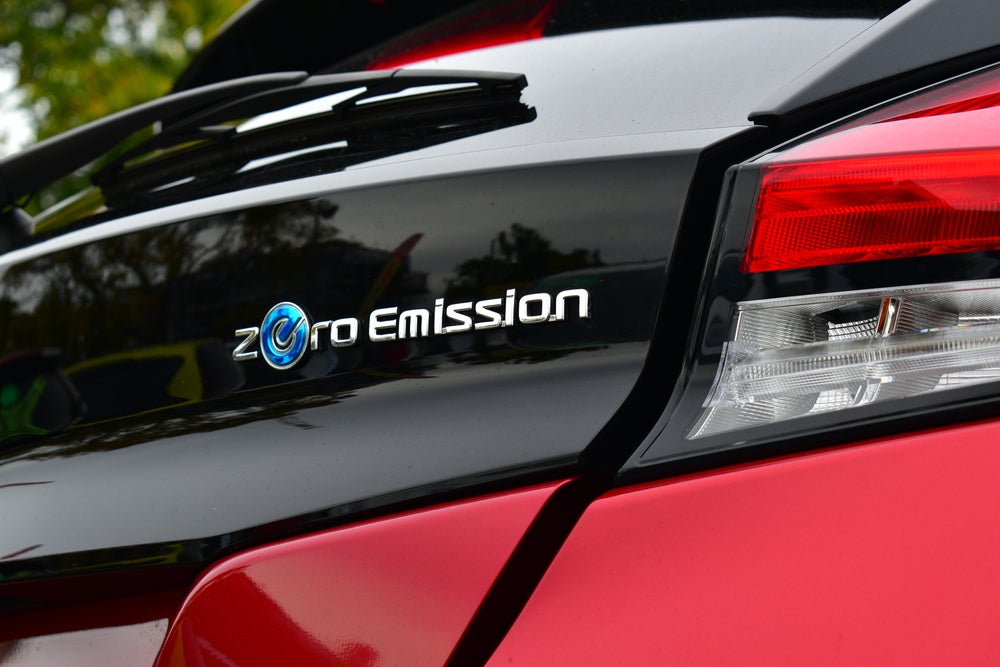While waiting in traffic behind a brand-new battery electric vehicle (BEV) recently, I couldn’t help but notice the shiny badge stating, “Zero Emission.” But is there such a thing? Was the process of creating that badge even net zero emission? – probably not. But I’d like to explore the current state of play when talking about vehicular emissions and the prospect of ‘zero’ emissions.
First and foremost, BEVs and hydrogen fuel cell vehicles can accurately be described as zero tailpipe emission vehicles. BEVs do not have tailpipes and hydrogen cell fuel vehicles release only water vapour as a by-product of their propulsion system, but other emissions are released beyond those purely resulting from the operation of the powertrain.
Production: Firstly, the manufacture of all vehicles results in emissions. For example, material mining, processing, machining, treating, and assembly, all require energy and generate chemical byproducts released as hydrocarbons and carbon emissions. Unfortunately, it is almost impossible to truly produce anything non-organic that is emission-free, without perhaps a hermetically sealed factory. Some facilities offer net zero production by offsetting their emissions against a saving elsewhere, but all production causes direct emissions of some description. Battery electric vehicles typically require the processing of more material than ICE vehicles, causing greater production emissions, due to the addition of a large traction battery.
Transportation: Getting the vehicle to the customer, unless the vehicle happens to be produced in a factory close by, involves the vehicle being transported. In many cases, the vehicle is already on the right continent, and may only need to be transported on the back of an emissions-producing truck. But it may very well, need to be shipped long distance from overseas – how, you ask? By a fossil fuel consuming, toxic gas and particulate emitting car carrier vessel.
Energy production: At present, the electrical energy used to power the zero-emission vehicles, whilst having the potential to be generated from renewable sources, may very well not be. For example, in the UK in 2023, a third of electrical energy was generated using fossil fuels (the remainder split 12% nuclear and 55% renewables, including significant bioenergy, which may not be truly renewable). So, there is no guarantee today that the ‘zero emission’ car in front of me was operating zero-emission electricity.
Brake emissions: Battery electric vehicles or hybrid electric vehicles do release considerably fewer brake emissions than internal combustion engine (ICE) vehicles due to regenerative braking. However, all vehicles still have friction brakes, and all vehicles do use those brakes and hence will release particulate emissions in the form of brake dust. For example, any electric vehicle that is fully charged (charged to 100%) does not have regenerative braking capability and will rely entirely on friction brakes. Hence, a BEV charged to 100% and controlling its descent from the top of a hill versus an equivalent ICE vehicle doing the same will release more brake emissions as both will be relying on friction brakes, but the BEV is likely to be heavier.

US Tariffs are shifting - will you react or anticipate?
Don’t let policy changes catch you off guard. Stay proactive with real-time data and expert analysis.
By GlobalDataTyre emissions: Tyres always have and frankly always will produce particulates, as does any friction-dependent device. Only in recent years has the environmental harm of the microplastics, chemicals and heavy metals hidden in vehicle tyres begun to come to light. Some tyre companies are exploring ways to reduce their emissions by implementing harder composites, and others are exploring electrostatic devices that can ‘suck up’ these emissions.
Refrigerant: All vehicles with air conditioning, battery cooling or heat pumps will utilise a type of refrigerant that may harm the environment. As a result, in recent years some automotive companies have announced a switch to less environmentally damaging refrigerants. In a perfect world, refrigerant would not be a concern as the exact quantity of refrigerant injected into the vehicle systems at the production stage would be removed at the vehicle’s end of life with no loss. However, in reality, it escapes. It escapes through seals, during the filling process, where it voids to the atmosphere, through the service process, which is required when enough refrigerant has leaked out of the system, or when any front-end collision causes a rupture to a condenser or any other refrigerant-carrying device. And what makes this so concerning is that refrigerant is up to two thousand times more harmful (gram for gram) than carbon dioxide when contributing to the greenhouse effect.
In summary, there is no such thing as a zero-emission vehicle at present. However, zero tailpipe emission vehicles and even hybridised vehicles will play a pivotal role in the pursuit of zero emissions and are essential in reducing overall emissions from the automotive industry and protecting our environment.
Oliver Petschenyk, Analyst, Powertrain Forecasts, GlobalData
This article was first published on GlobalData’s dedicated research platform, the Automotive Intelligence Center. For more details on GlobalData’s designated Global Light Vehicle Powertrain module, click here




